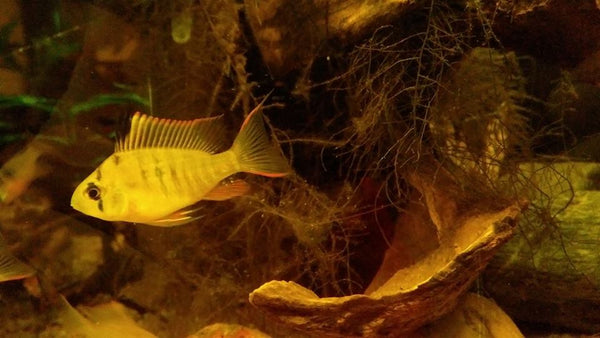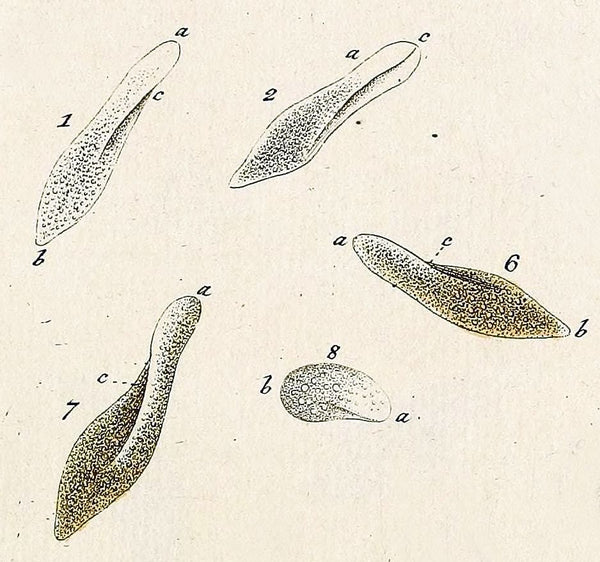- Continue Shopping
- Your Cart is Empty
The "function" behind "functional aesthetics": Clues from nature!
Some three plus years into the existence of Tannin Aquatics and our ongoing mission to throw light on the formerly dark world of blackwater, botanical-style aquariums, and there are more and more new people entering the game. This is a very exciting time, because we are no longer in the "Will doing this kill my fishes?" mode, and are more into a "How can I utilize these materials and ideas to do____________?"
And, in order to make sense of it all, we spend a great deal of time examining the processes which occur when leaves and other botanicals are added to the aquarium. And this is important, not only from an aesthetic standpoint, but from a functional/operational standpoint. It definitely differs from our practice in decades past, where the idea of throwing in materials that affect the water quality/composition was strictly a practice reserved for speciality hobbyists, like killifish breeders, Dwarf Cichlid keepers, etc., who wanted to create special conditions for breeding.
Yeah, you won't read about this esoteric stuff in just "any old aquarium blog", right?

Nowadays, we're advocating the addition of such materials to our aquariums as a matter of course, for the everyday purpose of replicating natural processes for our fishes. We understand- or are attempting to understand- the impact on both our aquariums' ecology and the husbandry involved.
Yeah, sort of a different approach.
We add a lot of biological material to our tanks in the form of leaves and botanicals- perfectly analogous to the process of allochonous input- material is something imported into an ecosystem from outside of it. Exactly what happens in the tropical streams and rivers that some of us obsess over!

There's been a fair amount of research and speculation by both scientists and hobbyists about the processes which occur when terrestrial materials like leaves and botanical items enter aquatic environments, and most of it is based upon field observations. As hobbyists, we have a unique opportunity to observe firsthand the impact and affects of this material in our own aquariums! I love this aspect of our "practice", as it creates really interesting possibilities to embrace and create more naturally-functioning systems, while possibly even "validating" the field work done by scientists!
It goes without saying that there are implications for both the biology and chemistry of the aquatic habitats when leaves and other botanical materials enter them. Many of these are things that we as hobbyists observe every day in our aquariums!

A lab study I came upon found out that, when leaves are saturated in water, biofilm is at it's peak when other nutrients (i.e.; nitrate, phosphate, etc.) tested at their lowest limits. This is interesting to me, because it seems that, in our botanical-style, blackwater aquariums, biofilms tend to occur early on, when one would assume that these compounds are at their highest concentrations, right? And biofilms are essentially the byproduct of bacterial colonization, meaning that there must be a lot of "food" for the bacteria at some point if there is a lot of biofilm, right?
More questions...
Does this imply that the biofilms arrive on the scene and peak out really quickly; an indication that there is actually less nutrient in the water? Is the nutrient bound up in the biofilms? And when our fishes and other animals consume them, does this provide a significant source of sustenance for them?
Hmm...?

Oh, and here is another interesting observation:
When leaves fall into streams, field studies have shown that their nitrogen content typically will increase. Why is this important? Scientists see this as evidence of microbial colonization, which is correlated by a measured increase in oxygen consumption. This is interesting to me, because the rare "disasters" that we see in our tanks (when we do see them, of course, which fortunately isn't very often at all)- are usually caused by the hobbyist adding a really large quantity of leaves at once, resulting in the fishes gasping at the surface- a sign of...oxygen depletion?
Makes sense, right?
These are interesting clues about the process of decomposition of leaves when they enter into our aquatic ecosystems. They have implications for our use of botanicals and the way we manage our aquariums. I think that the simple fact that pH and oxygen tend to go down quickly when leaves are initially submerged in pure water during lab tests gives us an idea as to what to expect. A lot of the initial environmental changes will happen rather rapidly, and then stabilize over time. Which of course, leads me to conclude that the development of sufficient populations of organisms to process the incoming botanical load is a critical part of the establishment of our botanical-style aquariums.

Fungal populations are as important in the process of breaking down leaves and botanical materials in water as are higher organisms, like insects and crustaceans, which function as "shredders." So the “shredders” – the animals which feed upon the materials that fall into the streams, process this stuff into what scientists call “fine particulate organic matter.”

And that's where fungi and other microorganisms make use of the leaves and materials, processing them into fine sediments. Allochthonous material can also include dissolved organic matter (DOM) carried into streams and re-distributed by water movement.

And the process happens surprisingly quickly.
In experiments carried out in tropical rainforests in Venezuela, decomposition rates were really fast, with 50% of leaf mass lost in less than 10 days! Interesting, but is it tremendously surprising to us as botanical-style aquarium enthusiasts? I mean, we see leaves begin to soften and break down in a matter of a couple of weeks- with complete breakdown happening typically in a month or so for many leaves. And biofilms, fungi, and algae are still found in our aquariums in significant quantities throughout the process.
So, what's this all mean? What are the implications for aquariums?

I think it means that we need to continue to foster the biological diversity of animals in our aquariums- embracing life at all levels- from bacteria to fungi to crustaceans to worms, and ultimately, our fishes...All forming the basis of a closed ecosystem, and perhaps a "food web" of sorts for our little aquatic microcosms. It's a very interesting concept- a fascinating field for research for aquarists, and we all have the opportunity to participate in this on a most intimate level by simply observing what's happening in our aquariums every day!

Now, I understand that this is an aggregation of a lot of facts coming from different directions, being interpreted for our purposes. However, these interesting tidbits of knowledge are things that we can utilize to correlate what we observe every day in our aquariums, and to better understand the actual function of them, aren't they?
It goes beyond just the interesting "look" of our blackwater/brackish, botanical-style aquariums...it is a way of understanding and embracing the processes which occur within them, and allowing all of the life forms which reside within them to benefit from them.

Stay patient. Stay engaged. Stay curious. Stay observant. Stay methodical. Stay diligent...
And Stay Wet.
Scott Fellman
Tannin Aquatics











Scott Fellman
Author